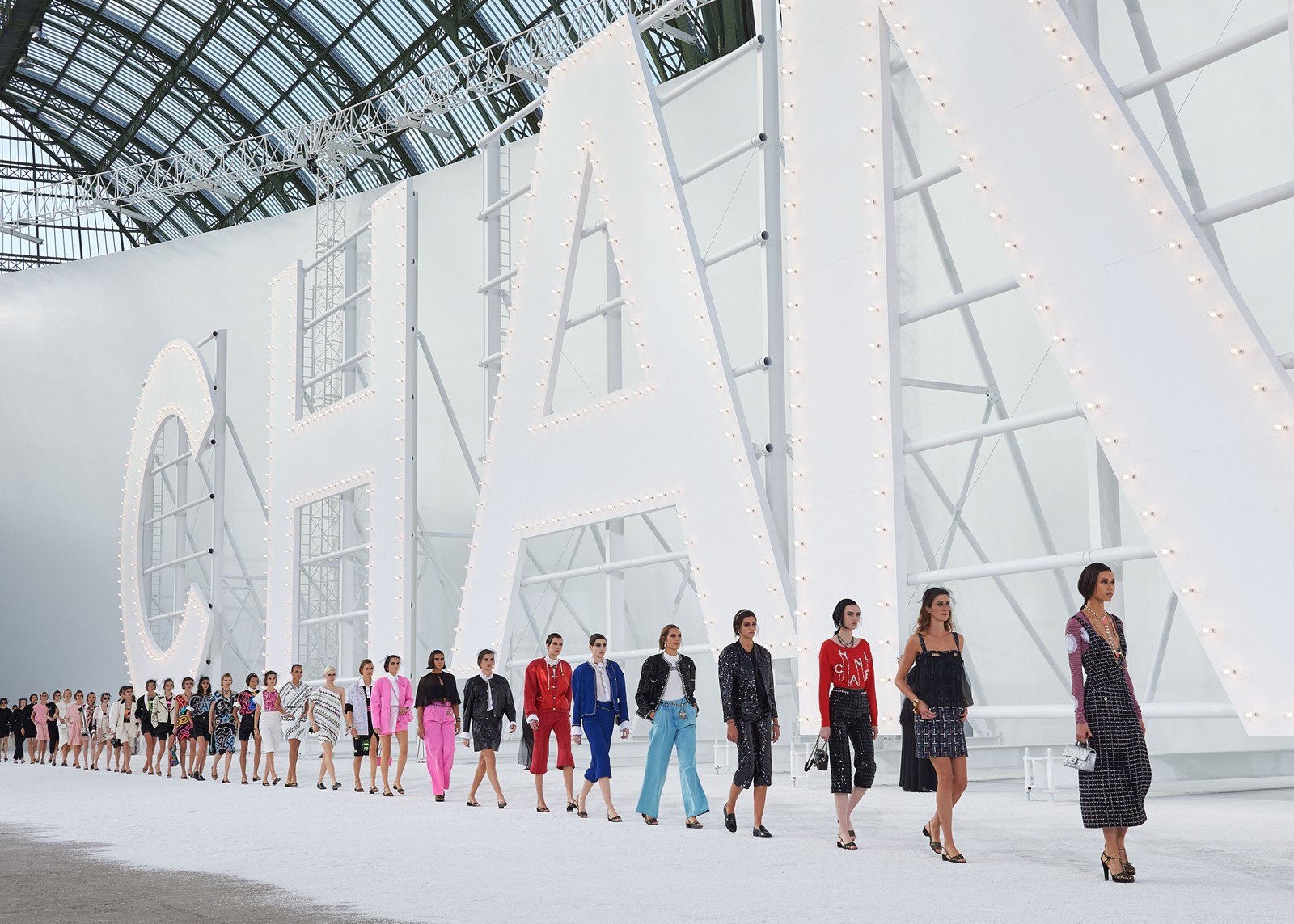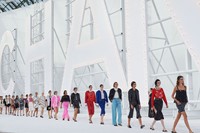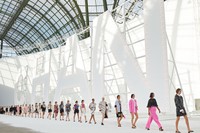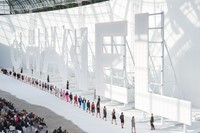A phalanx of scaffolding-backed white letters towering inside the Grand Palais and spelling out C-H-A-N-E-L backdropped Virginie Viard’s Spring/Summer 2021 show for the French house. In case you didn’t get the hint, they were dead ringers for those punctuating the Hollywood hills of the Santa Monica mountains in California – yet, in the centre of Paris, they weren’t quite as incongruous as they seemed.
The house of Chanel is inextricably tied up with Hollywood – and not just its modern incarnation. It spans back to the birth of the place as the home of the American film industry in the interwar period: in March 1931, Gabrielle Chanel travelled to Hollywood to design costumes at the request of Samuel Goldwyn of United Artists. Chanel was the first French fashion house to do so, an attempt by Hollywood to capture the glamour of the couture industry and Chanel’s allure, already world-famous to millions who could never buy a dress thanks to the phenomenal success of Chanel No.5 – incidentally, introduced a century ago, in 1921. It was also an attempt to learn from history: the fast-changing fashions of 1929-30, when hemlines dropped as the stock market crashed, waists rose, and a romantic breed of femininity outmoded the sharp, angular silhouette of the flapper, managed to make carefully conceived film costumes entirely irrelevant virtually overnight. Goldwyn figured he could get ahead of fashion’s curve by inviting the greatest living couturière to give him a preview of where her febrile mind may be headed.
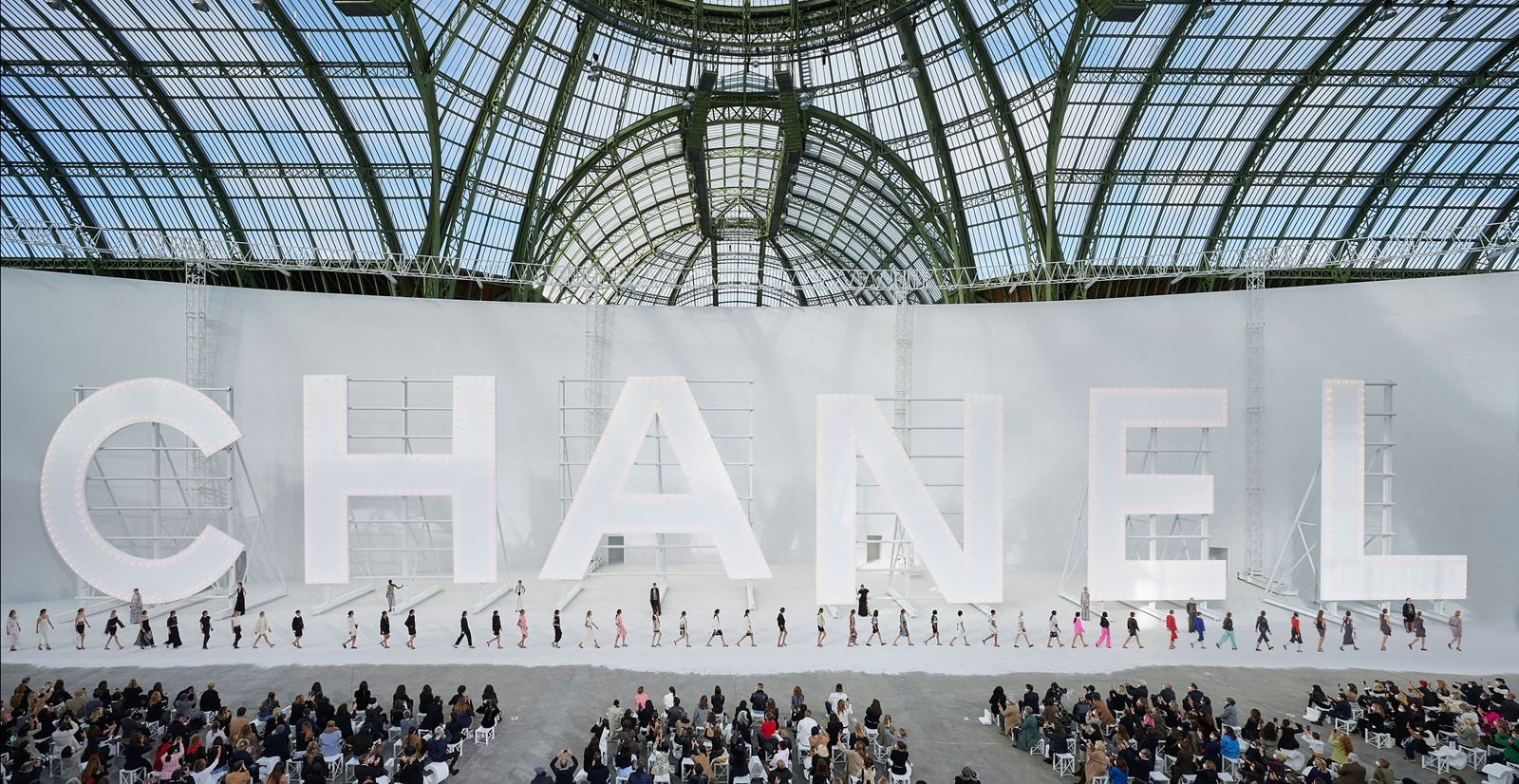
Chanel was handsomely compensated: $1 million (the equivalent of around $16 million today), and the enviable and much-publicised task of designing both on- and off-screen wardrobes for United’s roster of stars including Ina Claire and Gloria Swanson. It’s a remarkably modern conceit – as were so many of Chanel’s firsts. The house designed costumes for three Hollywood pictures: Palmy Days (1931); Tonight or Never (1931); and The Greeks Had a Word for Them (1932), before Chanel and Goldwyn fell out. Reportedly, the subtlety and ease of Chanel’s designs – precisely the qualities that drew women then, and now, to the clothes bearing her name – were not showy or flashy enough for cinema to Goldwyn’s mind. Examining the styles of the great costume designers of the period, Travis Banton, or Gilbert Adrian, their clothes are decorative, theatrical and somewhat extreme. Ironically, Adrian’s taste for exaggeratedly broad and puffed shoulders, proposed to flatter the figure of Joan Crawford, would have a seismic influence on styles of the decade, often outpacing the impact of couture. That said, Chanel’s clothes would never reflect those qualities – she left haute couture histrionics to her contemporary Elsa Schiaparelli, returning to Paris to continue creating clothes geared to the dynamic pace and need of the life of the modern women – the very lifestyle Chanel herself lived best.
“The world of Chanel evokes so many images, a whole unconscious that’s linked to cinema,” said Viard. And indeed, Chanel didn’t stop collaborating with film auteurs and stars, including work with stars of French cinema such as Jean Renoir. In the 1960s, her work with both French Nouvelle Vague directors and European cinema stars was significant: often, her clothes were used to epitomise elegance, refinement, occasionally haute bourgeois mores – such as Romy Schneider’s character in Luchino Visconti’s 1962 film Boccaccio ’70. Visconti not only asked Chanel to dress Schneider, but to coach the actress on the idea of elegance.
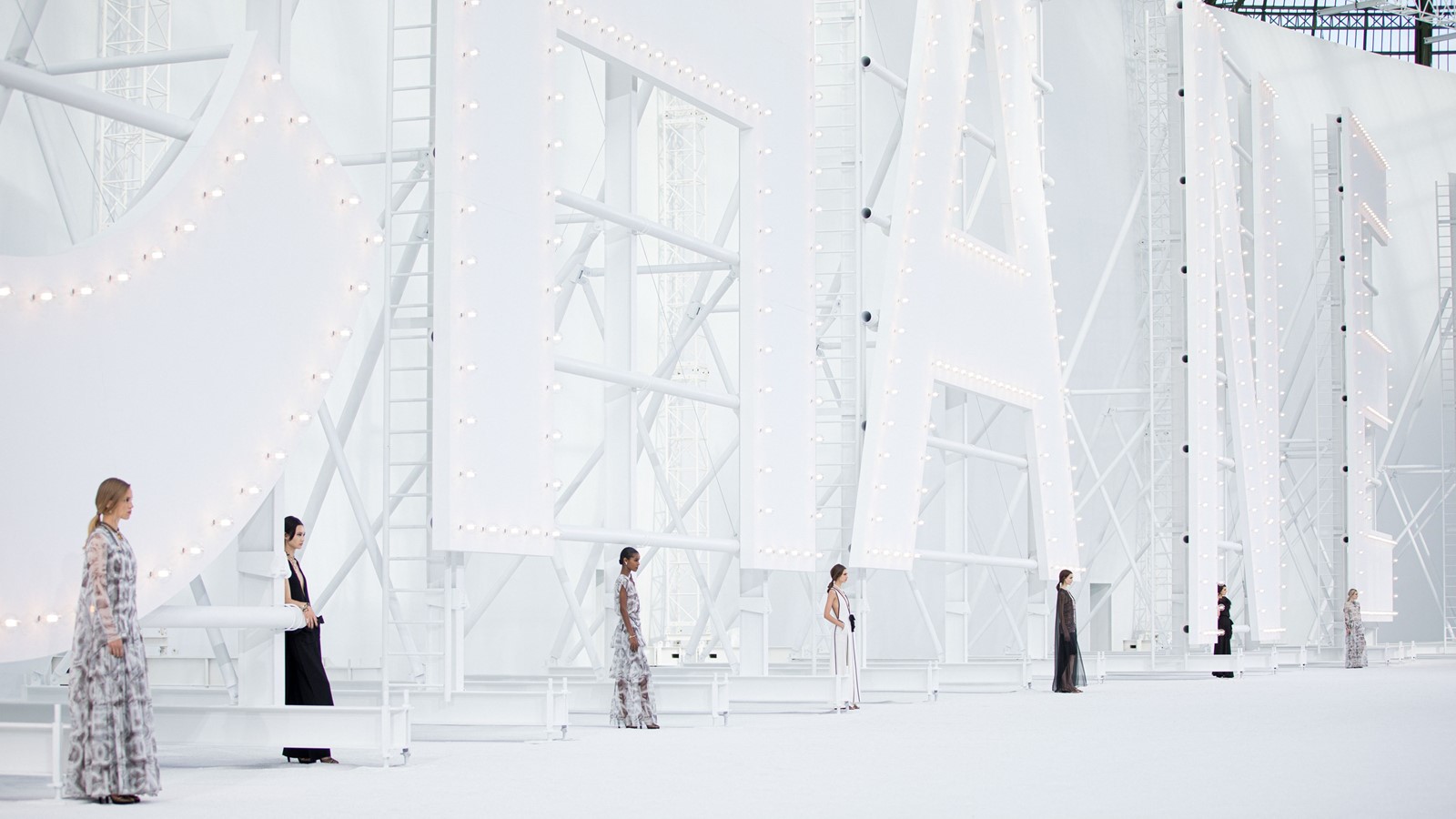
Schneider was one of Viard’s reference points – alongside Anna Karina and Jeanne Moreau, all of whom appeared in a pre-show teaser by Inez van Lamsweerde & Vinoodh Matadin, juxtaposing the past with the present and telescoping time as only cinema can. Cinema, and Chanel – the timeless Chanel tweed suit, easy chiffon gowns, little black dresses and relaxed, slouchy silhouettes where a masculine air, paradoxically, only serves to emphasise femininity, are all references from Chanel’s heritage that still feel contemporary. In a sense, they are as iconic and recognisable as the Hollywood sign itself – which even when it reads ‘CHANEL’ could never be mistaken. “This collection is a tribute to the muses of the house,” Viard said afterwards. “Some of them are far away, it’s been a long time since we saw them.” She was talking about the global roster of actors affiliated with Chanel: but she could have been talking about those house codes, and indeed about Gabrielle Chanel herself.
